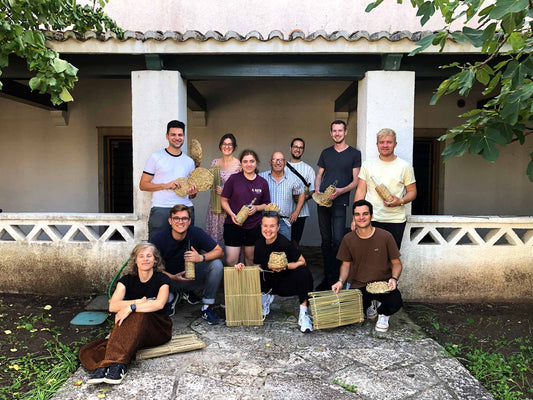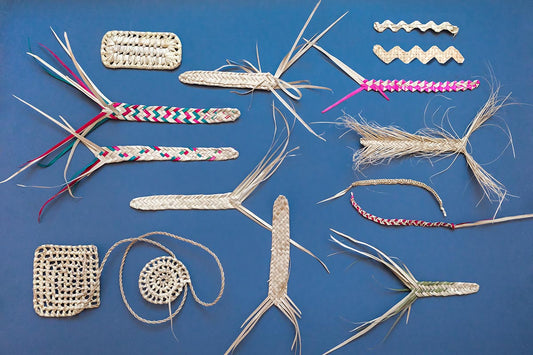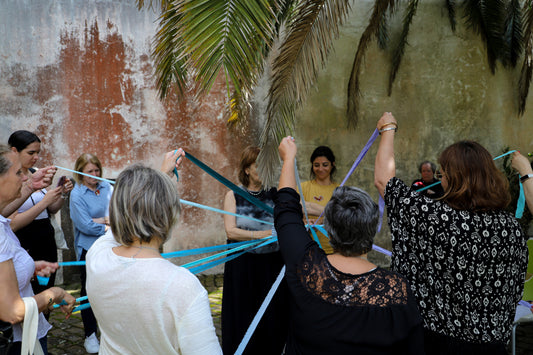Integrated development of artisanal culture in the Algarve

Far away from the scenic routes and the promise of warm sands, the gestation of this project meant twelve months in the far-away heartland of the Algarve, confined between the sea and the mountains, isolated from the rest: a singular region with cultural roots as deep as they are dispersed, characterized by the pragmatism of its inhabitants. Life in the Serra (mountain range) is worlds away from the luxurious tourist paradise filled with sun, beach and golf — so far apart that, when they travel there, the serrenhos, or mountain dwellers, often say they are going to the Algarve.
This geographic isolation, which is also cultural and so often political, has preserved the authenticity that inspired the inception of the TASA project, especially in that we have chosen to work only with what we had on hand: materials, technologies, skills. Also because we believe that this is the only way to get around to creating new artifacts — and more — that encapsulate the expression of ways of doing and thinking of a place and a people. Meaningful in their own life experiences, these objects would nevertheless go beyond what has been done to date, introducing new perspectives of interpretation and continuity to the material culture of these places, especially regarding their relevance in a broader context.
In this region, one lives with and off the land, of what it prodigally or austerely surrenders onto the hands and mouths of the local dwellers, with their feet firmly planted on the ground, fending for themselves and satisfying their needs with what they have, as best they know.

Without whining or excuses, this material realism translates into a practical and thorough awareness of materials and their potential, revealed practices as effective as they are ancient, however not stuck in a defined time or confined to a given space.
The project began with simple questions being straightforwardly and pragmatically posed: What are the current problems faced by regional craft production? How can we boost the local market through these activities? How can the traditional arts of making directly respond to current demand? To what extent can they regard themselves as an alternative to mass-produced industrial products?
If there is any innovation in this project, it lies exactly in its departure from situations and problems from the local reality — identified in the field — to then, through the means available, provide concrete and differentiated answers, in the form of activities, products and services. What we ended up realizing as the process unfolded was the actual capacity of the mechanisms and strategies adopted to operate a revitalizing intervention in a context where, alongside problems in need of solution, there is also massive potential to be explored.

To work as designers in the development of products based on traditional techniques that have forever been originating useful goods for everyday life meant, firstly, to understand the ways of a specific cultural context — a mindset and a way of conveying meaning.
This kind of work is carried out far away from your desk and computer, where design is a practice — a constant learning and hands-on process. But it is also a transparent and open process, one which acquires significance as the events unfolds and learns from the unpredictability, combining diversity into a meaningful whole, and that consistently returns the results to its origin.
One must be fully open and alert so as to follow the free flow of social experiences, the seasonality of materials and the precariousness of each decision. In this process, experience teaches us, skills of making and doing are learned and the object arises from the need and ingeniousness.

The method designed from these premises ends up by responding to the characteristics of the place and, most importantly, it evolves with people. Even more than in any other project-oriented context, the designer’s task is to carry out a social and human reading, a cultural interpretation, a mediation between issues: past and future, manual and technological, object and symbol, function and significance.
During the project it became clear that the solution could not be expected to lie solely on the potter's wheel, the researcher’s findings or the product’s label. It must lie in a joint and coordinated action between artisans, researchers, local authorities, supply and demand, conception and communication — here, innovation lies in collaboration. The results achieved were made possible only because a horizontal working relationship was established from the onset — one of respect and closeness, commitment but also openness and dialogue. Thus, the artisans made the process their own and recognized themselves in the work developed, gaining responsibility over it.
If the role of design here is to convey added value to new products, it does so by seeking to attribute a specific quality — material, social and cultural — to the way in which they are produced, marketed and used. Without overlooking what these features contribute to the recognition of local heritage and manual work. Ultimately, we are striving to assert the individual identity of a number of craft activities pertaining to a territory, in order to then build an enhanced appreciation of distinctiveness — new artifacts with descendants and origin.



